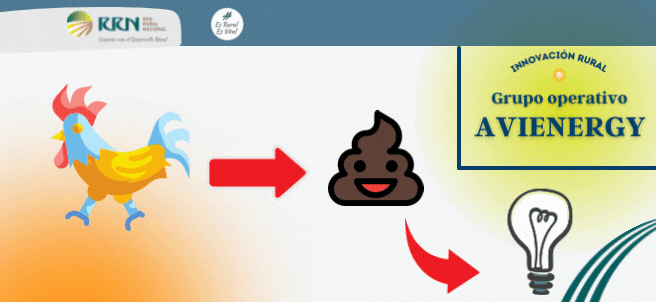
17 de March de 2022
Innovación
- The Avienergy Operational Group aims to extract energy and soil fertilizers from poultry sector manure.
- Chicken, hen and turkey droppings represent one of the most abundant and problematic waste products in the poultry sector.
- The proposed solution aims to reduce greenhouse gases while improving the competitiveness of the sector.
"From waste to resource." This is the main motto of the Avienergy Operational Group (OG) , which has been established as a circular economy project in the poultry sector to harness the energy use of bird droppings, whether chicken, hen, or turkey droppings.
Chicken manure is the excrement of broiler birds, which is always mixed with the material used as bedding for chickens (wood sawdust, rice husks, corn, etc.). Another poultry manure is chicken droppings, which are the droppings of laying hens, while turkey droppings are turkey droppings.
GO's research focuses on obtaining a double product from the manure generated in poultry farms, which produce meat and eggs:
- Renewable energy sources.
- Fertilizers and components for the use of nutrients in the soil.
Within the agricultural sector, poultry droppings are one of the most problematic waste products. Although the most common way to dispose of them is to use them as natural fertilizer, regulations on manure management are becoming increasingly restrictive and complicate this practice, especially in areas with high livestock populations.
Thus, in Spain, legislation establishes the maximum amount of nitrogen per hectare that can be used on agricultural land. This means that, in areas with high livestock populations, poultry farmers are forced to store manure and manage it externally, which leads to high indirect emissions and additional costs.
Solutions
The proposed solution involves incinerating the excrement: burning it through a thermochemical process adapted to this type of waste, which will allow for the production of thermal energy that could be used to meet the farms' energy demands. " This thermal utilization would reduce the farm's energy dependence," says Christian Di Stasi, senior researcher in the Bioenergy department at Energylab.
How does this process work? “Poultry droppings, as well as most biomass, can be burned to obtain thermal energy. Just as a wood pellet would be burned, it would be possible to burn a chicken manure pellet,” says Di Stasi.
Although it seems simple at first glance, burning excrement is more complicated: the excrement contains a high moisture content, which reduces the total amount of usable energy. Therefore, research will also focus on studying different drying techniques, preferably low-cost, to produce dry excrement that can be used for combustion to generate thermal and electrical energy more efficiently. In addition, the implementation of exhaust gas cleaning systems is also planned to ensure that the entire system is environmentally friendly.
Rural innovation
The Galician University Business Foundation (FEUGA) represents the Energylab Operational Group, which is 80% co-financed by the European Union's European Agricultural Fund for Rural Development (EAFRD) and 20% by the Ministry of Agriculture, Fisheries and Food, within the framework of the 2014-2020 National Rural Development Program.









